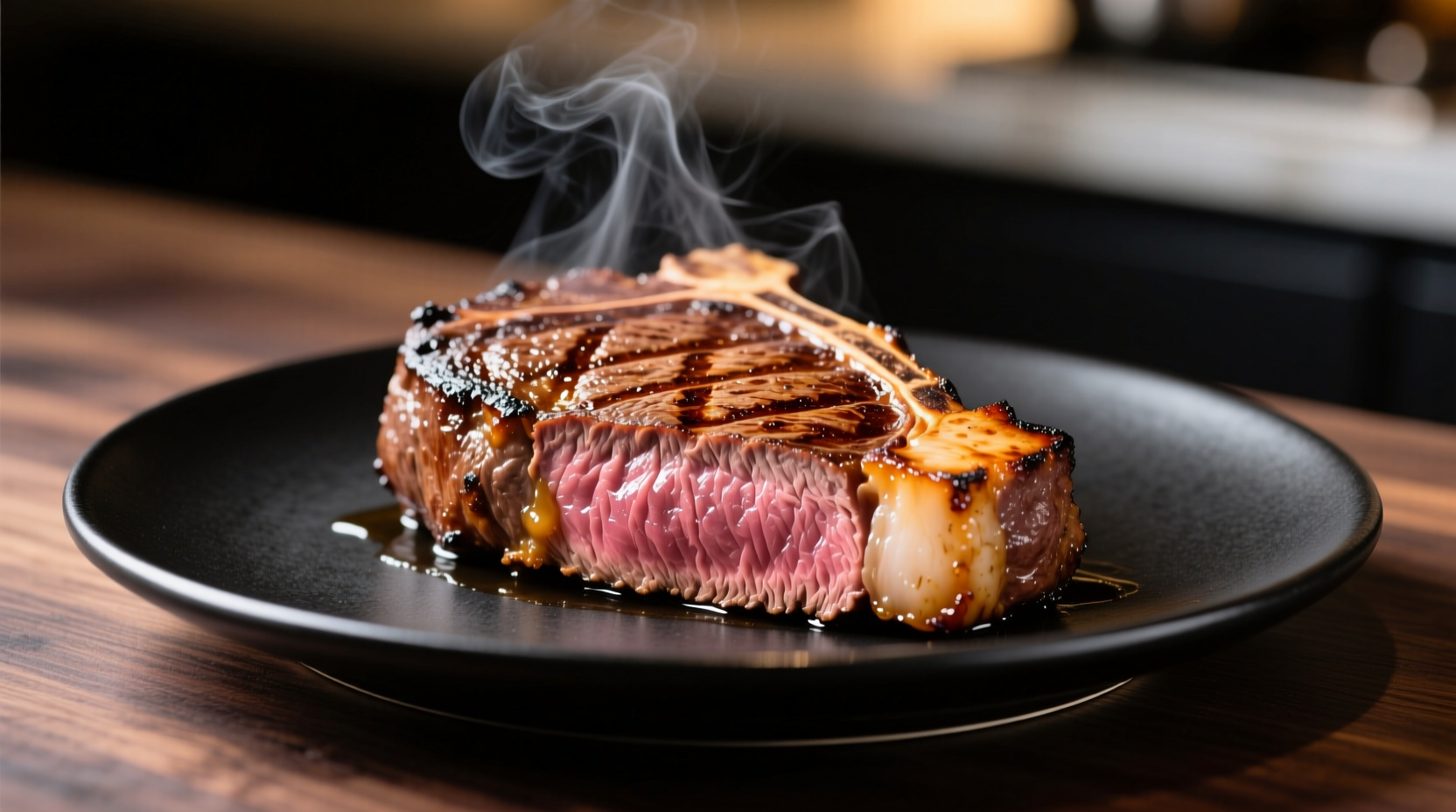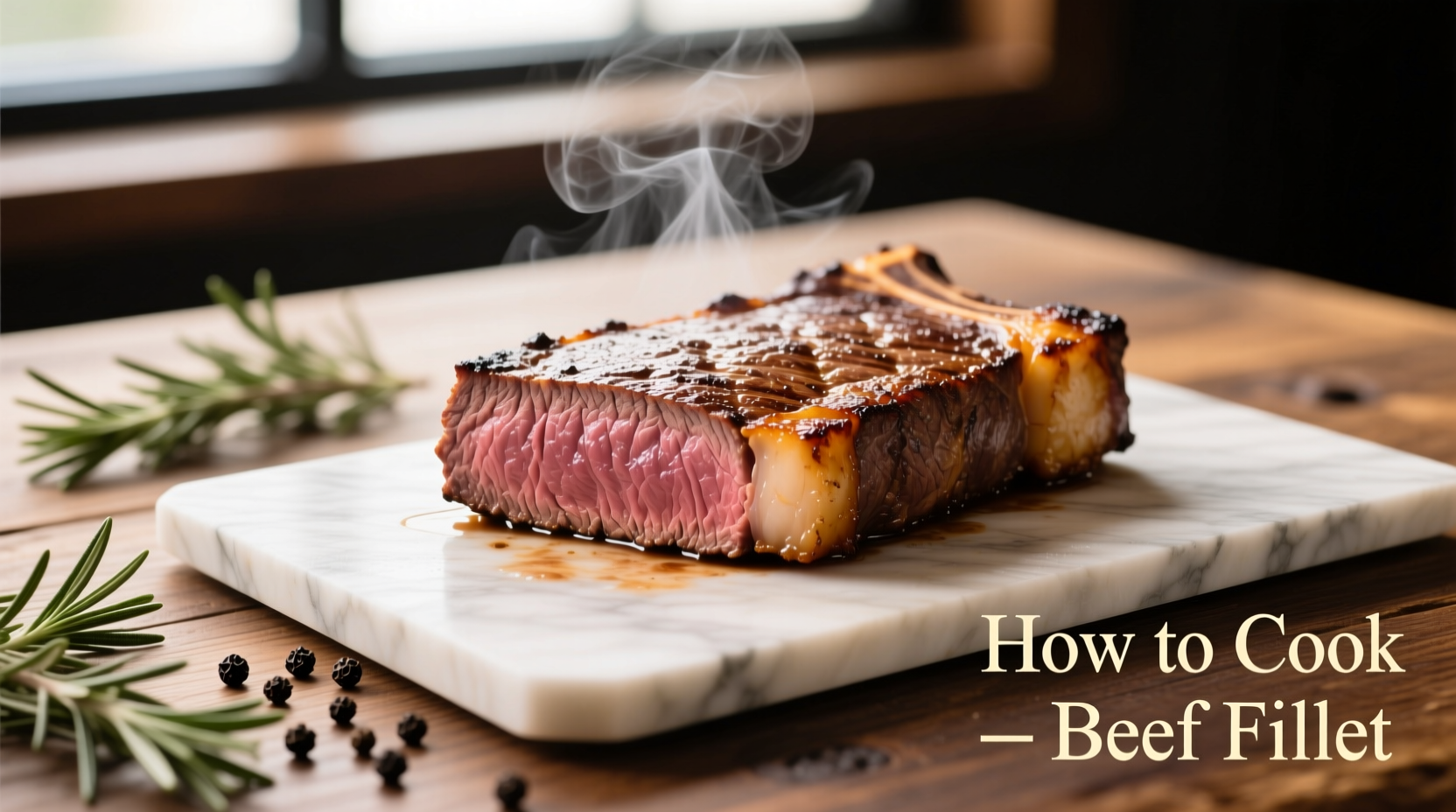There's nothing quite like a perfectly cooked beef fillet—tender, flavorful, and cooked exactly to your preference. Whether you're preparing a special dinner or mastering foundational cooking techniques, this guide delivers professional results every time. Follow these science-backed methods to transform your beef fillet from raw to remarkable.
Understanding Beef Fillet: The Cut That Demands Precision
Beef fillet (also called tenderloin) comes from the psoas major muscle along the spine, making it the most tender cut with minimal fat marbling. This tenderness means it cooks faster than other cuts but requires precise temperature control. According to the USDA Food Safety and Inspection Service, undercooked beef can harbor harmful bacteria, while overcooking turns this premium cut dry and tough (USDA FSIS, 2023).
Essential Preparation: The Foundation of Perfect Results
Proper preparation separates amateur attempts from professional outcomes. Allow your beef fillet to reach room temperature for 45-60 minutes before cooking—this ensures even cooking throughout. Season generously with coarse salt and freshly ground black pepper at least 40 minutes before cooking, allowing the salt to penetrate the surface for better flavor development.
| Cooking Method | Prep Time | Cook Time | Best For |
|---|---|---|---|
| Pan-Searing Only | 15 min | 12-15 min | Thin cuts under 1.5 inches |
| Combination Method | 20 min | 8-12 min | All fillet sizes (recommended) |
| Oven Roasting Only | 10 min | 20-25 min | Large roasts over 2 lbs |
| Grilling | 25 min | 15-20 min | Outdoor cooking enthusiasts |
The Foolproof Cooking Process: Step-by-Step
Step 1: Searing for Flavor Development
Heat a heavy oven-safe skillet (cast iron preferred) over medium-high heat until smoking slightly. Add high-smoke point oil like avocado or grapeseed oil. Place the seasoned fillet in the pan, ensuring it doesn't touch other pieces. Sear undisturbed for 2-3 minutes until a deep brown crust forms. Rotate the fillet to sear all sides, including the ends.
Step 2: Oven Finishing for Perfect Doneness
Transfer the skillet directly to a preheated 400°F (204°C) oven. Cook until the internal temperature reaches your desired doneness. For medium-rare (the ideal temperature for beef fillet), aim for 130-135°F (54-57°C). This typically takes 8-12 minutes depending on thickness. Never estimate doneness by time alone—always use a digital meat thermometer for accuracy.
Step 3: The Critical Resting Period
Remove the fillet from the oven and transfer to a cutting board. Tent loosely with foil and rest for 10 minutes—this allows juices to redistribute throughout the meat. Cutting too soon releases precious juices onto the cutting board rather than staying in the meat.
Temperature Guide: Your Doneness Reference
Professional chefs rely on precise internal temperatures rather than cooking time estimates. The American Culinary Federation recommends these temperature benchmarks for beef fillet:
- Rare: 120-125°F (49-52°C) - Cool red center
- Medium-rare: 130-135°F (54-57°C) - Warm red center (ideal for fillet)
- Medium: 140-145°F (60-63°C) - Warm pink center
- Medium-well: 150-155°F (66-68°C) - Slightly pink center
- Well-done: 160°F+ (71°C+) - Little to no pink
Remember that carryover cooking will raise the internal temperature 5-10°F during resting. Remove the fillet from heat 5°F below your target temperature.

Avoid These Common Beef Fillet Mistakes
Even experienced cooks make these critical errors when preparing beef fillet:
- Skipping the rest period: Cutting immediately causes 30% more juice loss according to culinary research from the Culinary Institute of America
- Using olive oil for searing: Its low smoke point (375°F) creates bitter compounds—opt for oils with smoke points above 400°F
- Overcrowding the pan: Lowers temperature and creates steam instead of sear
- Not drying the surface: Pat the fillet thoroughly with paper towels before seasoning for optimal crust formation
Serving Suggestions for Maximum Impact
Beef fillet shines with simple preparations that highlight its natural flavor. After resting, slice against the grain into 1/2-inch thick pieces. Serve with a compound butter (try garlic-herb or blue cheese) that melts over the warm meat. Classic pairings include roasted potatoes, seasonal vegetables, and a full-bodied red wine like Cabernet Sauvignon.
For an elegant finishing touch, create a quick pan sauce using the fond left in your skillet: deglaze with 1/2 cup red wine, add 1 cup beef stock, and reduce by half. Whisk in 2 tablespoons cold butter for a silky texture that complements without overwhelming the delicate beef flavor.
Beef Fillet Through the Culinary Timeline
Beef fillet preparation has evolved significantly over the past century. In the early 1900s, most home cooks roasted fillet slowly at low temperatures, often resulting in overcooked meat. The 1960s brought French culinary techniques to American kitchens, introducing high-heat searing. Modern precision cooking since the 2000s emphasizes exact temperature control through digital thermometers and sous vide methods. Today's recommended combination method—searing followed by brief oven finishing—represents the culmination of this evolution, delivering optimal texture and flavor (American Culinary Federation, 2024).
Contextual Cooking Guidance: When to Adjust Your Approach
Your cooking method should adapt to specific circumstances:
- For thicker cuts (over 2 inches): Use lower oven temperature (375°F) for longer duration to prevent exterior overcooking
- For special diets: Those requiring well-done beef should consider alternative cuts like ribeye, as fillet becomes dry beyond medium
- For time constraints: The reverse sear method (low oven first, then high-heat sear) provides more timing flexibility but requires planning
- For outdoor cooking: Grill over indirect heat after initial sear to maintain temperature control











 浙公网安备
33010002000092号
浙公网安备
33010002000092号 浙B2-20120091-4
浙B2-20120091-4